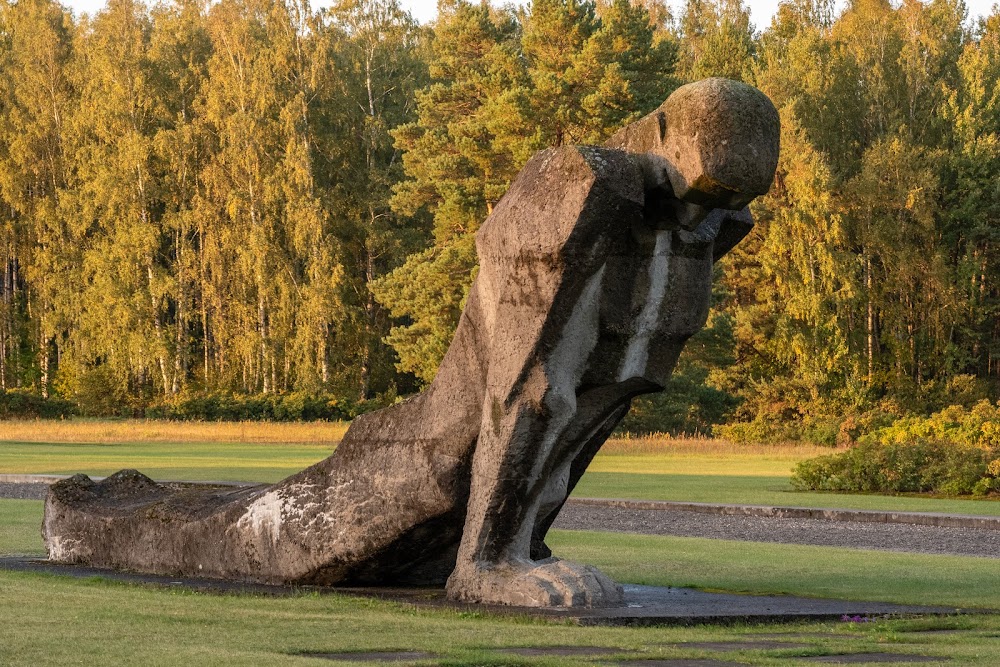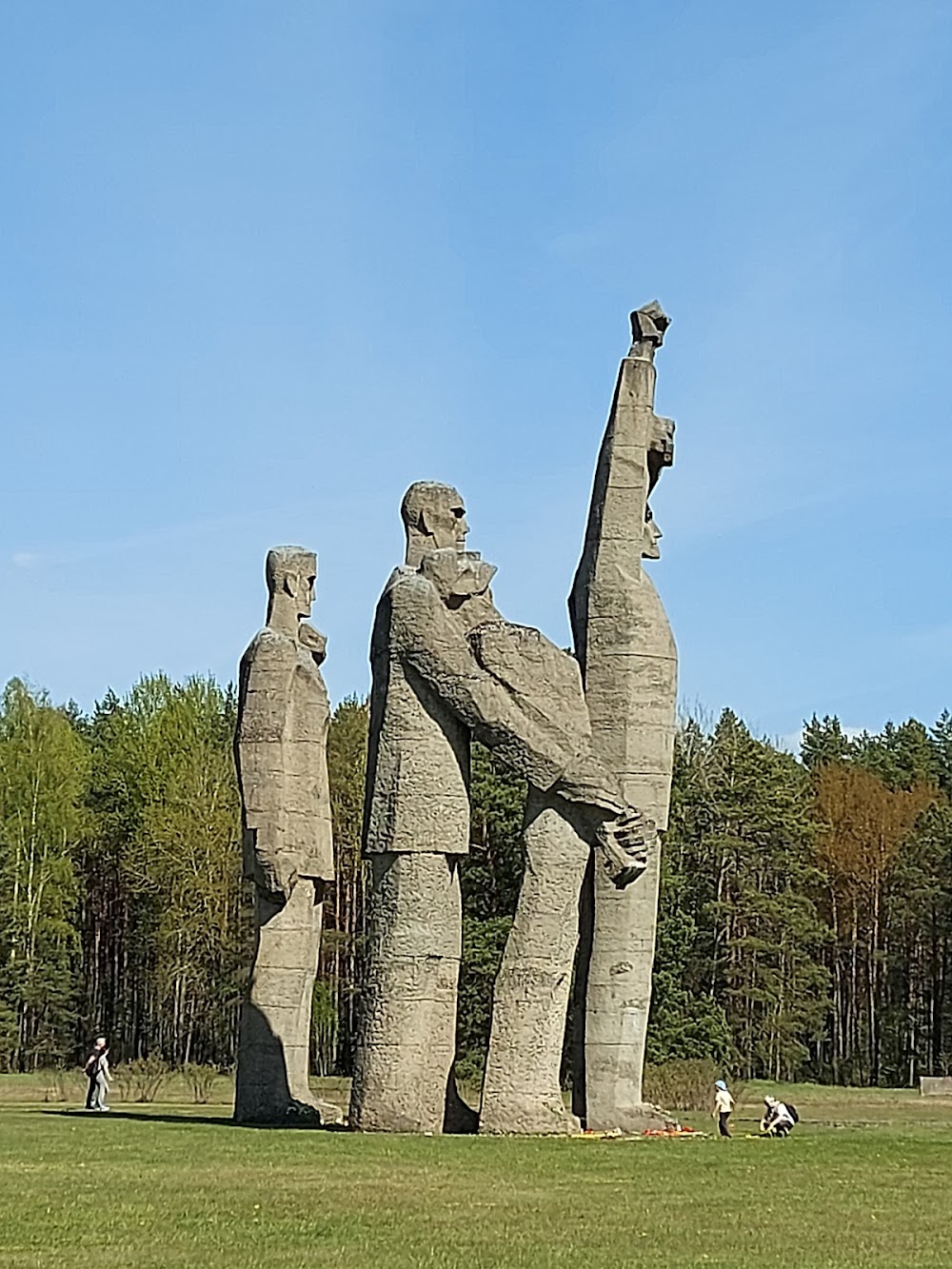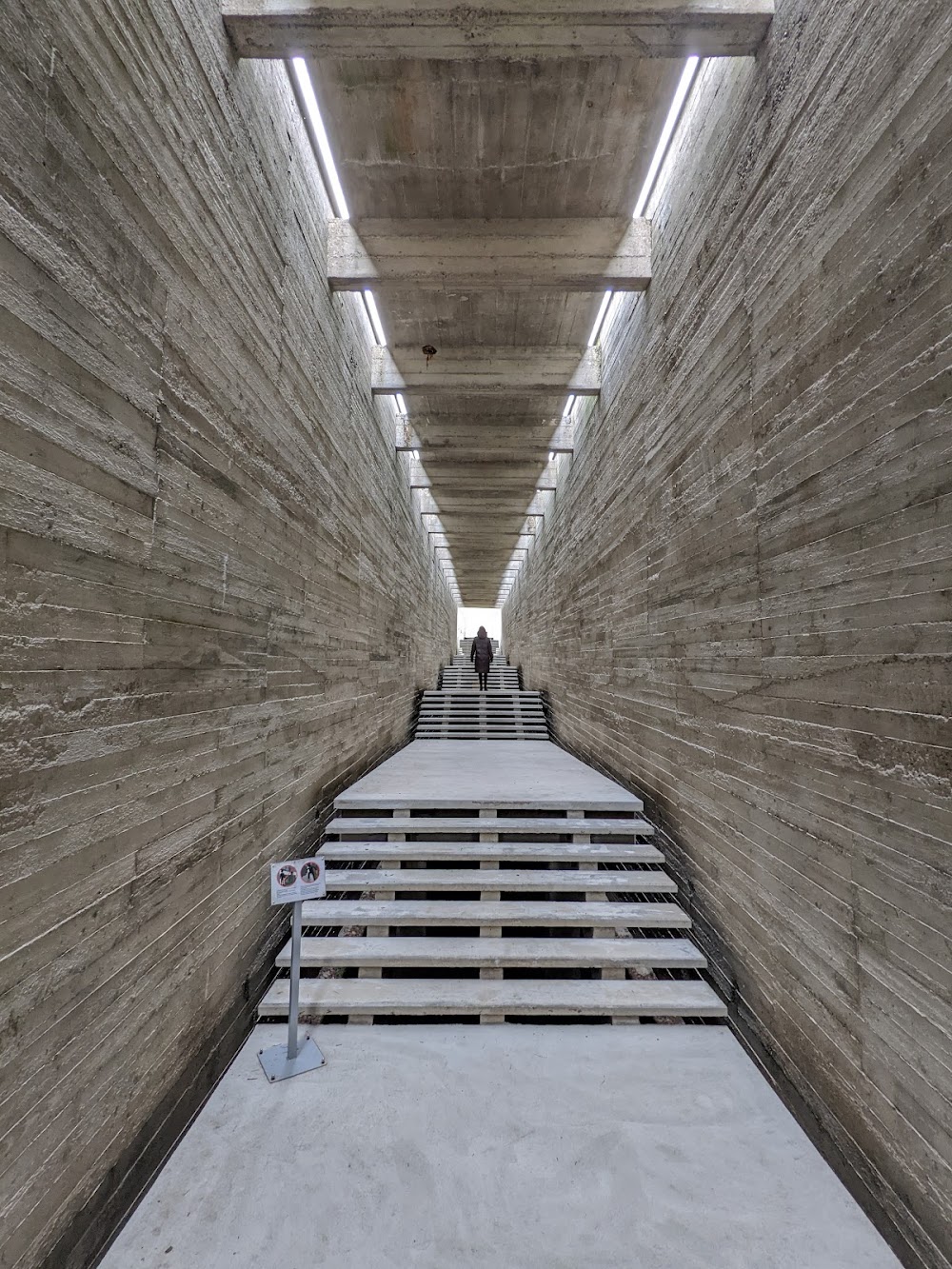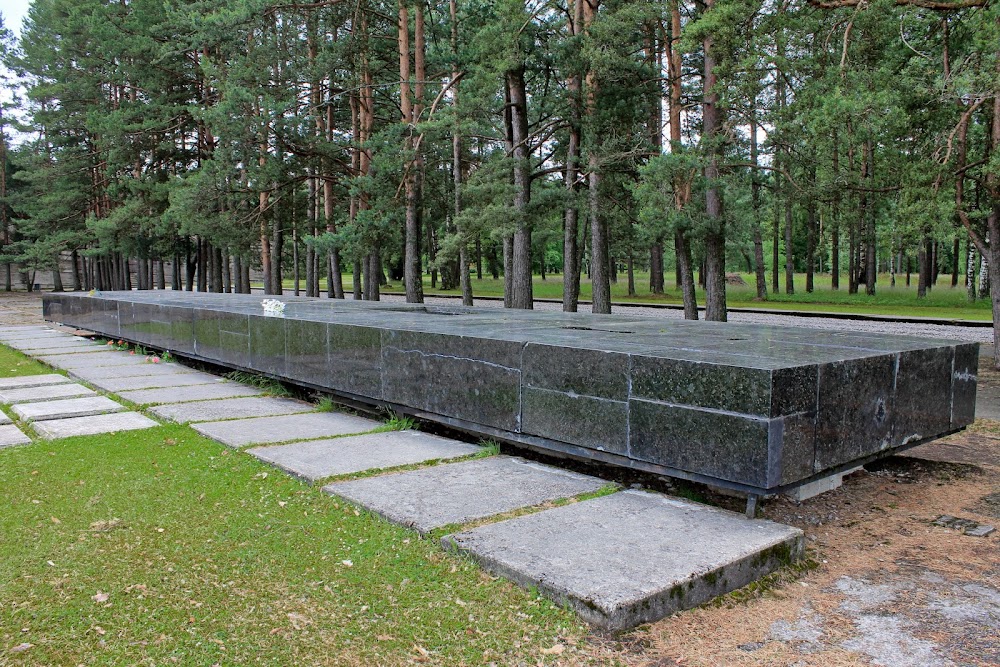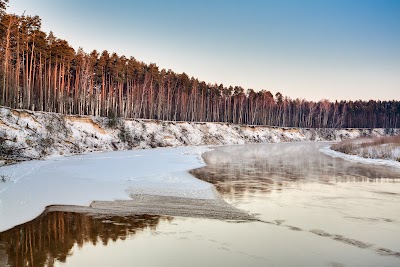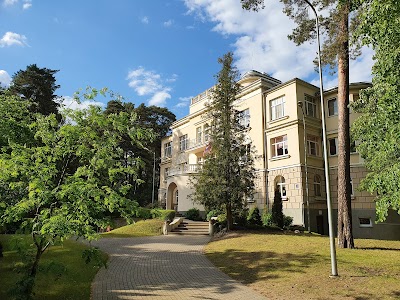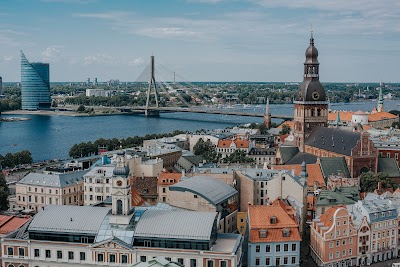Sala War Memorial (Salas kara piemiņas vieta)
Overview
The Salaspils Memorial, situated in Sala Municipality, Latvia, serves as a poignant testament to the atrocities of World War II, honoring the suffering and resilience of those who endured the horrors of the Salaspils concentration camp. This site stands as a lasting reminder of the human spirit's capacity to endure and remember.
During World War II, the Nazi regime established the Salaspils concentration camp in 1941, which rapidly evolved into one of the largest labor and internment camps in the Baltic region. Here, prisoners from Latvia, the Soviet Union, and various other nations faced unimaginable hardships, including forced labor, malnutrition, and brutal living conditions. Thousands of men, women, and children were detained within its confines, with many tragically losing their lives due to the inhumane treatment they endured.
In the aftermath of the war, Soviet authorities recognized the need for a memorial to honor the victims of the concentration camp. The initiative emerged in the early 1960s, fueled by a collective desire to acknowledge the suffering and ensure that the memories of those who endured such pain would not fade away. A design competition was launched, attracting considerable public interest and submissions from renowned architects and artists.
The construction of the Salaspils Memorial took place between 1961 and 1967, guided by a design created by Latvian architects Gunārs Lūsis, Oļģerts Ostenbergs, Ivars Strautmanis, along with sculptors Ļevs Bukovskis, E. Neill, and Oto Kalējs. Their design aimed to encapsulate both the horrors of war and the hope for a peaceful future. Despite facing numerous challenges, including the swampy terrain and the expansive area requiring coverage, the design team persevered, fueled by the significance of their mission.
At the heart of the memorial lies a vast, starkly geometric concrete monument, which stands in striking contrast to the lush greenery that surrounds it. This formidable structure evokes a sense of oppression and captivity, mirroring the hardships faced by the camp's prisoners. The memorial is further adorned with a series of hauntingly expressive sculptures, such as "Mother," "Protest," and "Solidarity," each encapsulating poignant emotions and forging a deep connection with visitors.
Among the memorial's notable features is the large, circular Ring of Life. This metal structure is inscribed with the words "Behind this gate, the earth groans," serving as a chilling reminder of the grim history that envelops the memorial grounds. Within the Ring of Life, a metronome emits a steady, heartbeat-like ticking sound, symbolizing the enduring spirit of those who suffered and perished in the camp.
The surrounding landscape of the memorial was thoughtfully designed to enhance the atmosphere of reverence and solemnity. Meandering paths guide visitors through the expansive grounds, leading them past individual and collective gravesites, providing ample space for reflection and remembrance. The forested areas around the memorial create a natural counterbalance to the stark concrete structures, offering a contemplative backdrop for visitors.
Over the years, the Salaspils Memorial has evolved into a vital site for educational programs, historical tours, and commemorative events. It plays a crucial role in reminding both current and future generations of the past atrocities and the enduring importance of human resilience and dignity. Ongoing maintenance ensures that the memorial remains a fitting tribute to the victims and a place for solemn reflection.
Ultimately, the Salaspils Memorial not only honors the victims of the concentration camp but also stands as a powerful symbol against the atrocities of war and totalitarian regimes. It underscores the importance of remembering history to prevent its darkest chapters from repeating. Through its haunting design and profound significance, the memorial attracts thousands of visitors each year, encouraging them to reflect on the past and aspire to a more just and peaceful future.


